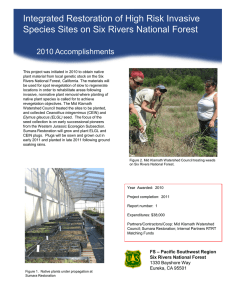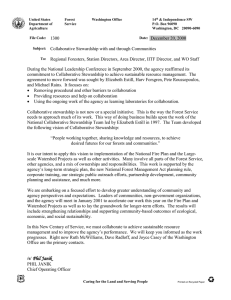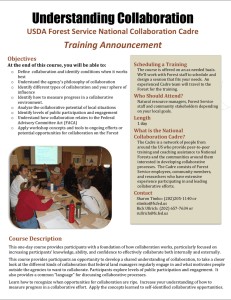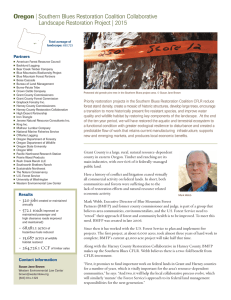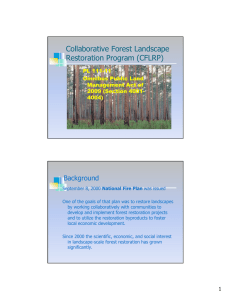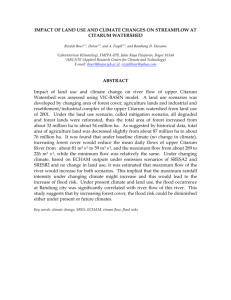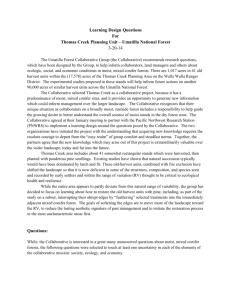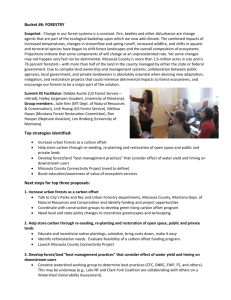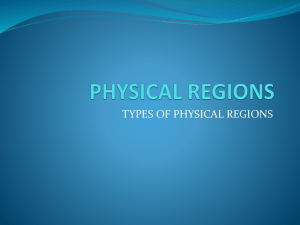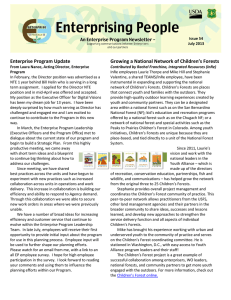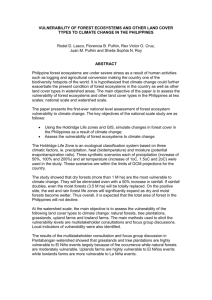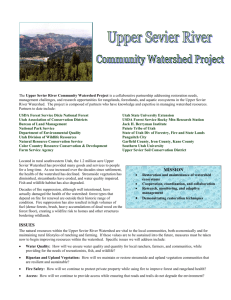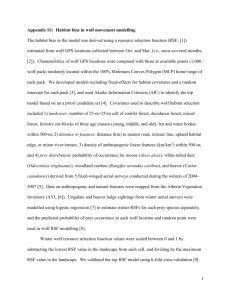Ochoco Forest Restoration Collaborative presentation
advertisement
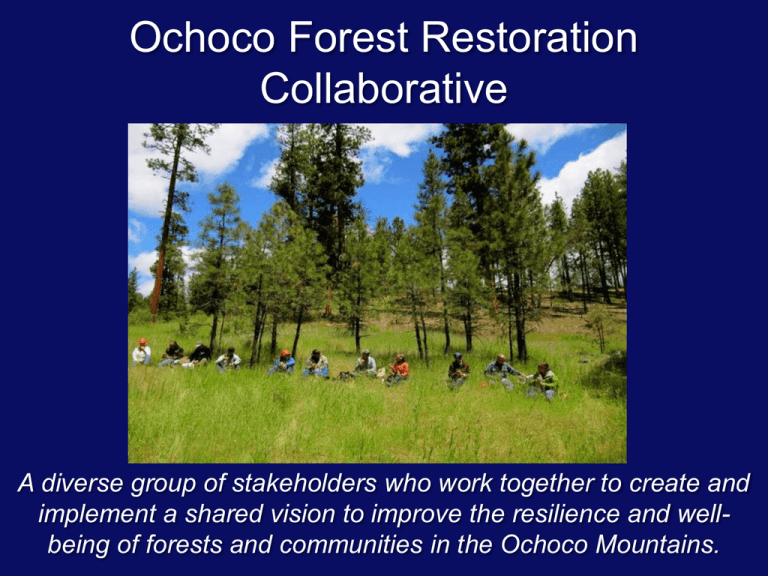
Ochoco Forest Restoration Collaborative A diverse group of stakeholders who work together to create and implement a shared vision to improve the resilience and wellbeing of forests and communities in the Ochoco Mountains. Why collaborate on the Ochoco? • History of disagreement and conflict • Convergence of interests and desire for community-led dialogue • Local, county, and regional leadership • Evidence of outcomes Goals • Ecologically-sound restoration • Tangible land management outcomes that address the broadest range of needs • Work together on solutions to local socioeconomic and ecological issues • Collaboration early, at the watershed analysis stage • Understand and support viable • Grassroots community-driven role in workforce and forest processing infrastructure that can make public land management restoration possible—and understand what it takes to make management economically viable • Proactive management for forest health • Increasing forest management and timber production that is • A safe environment to share needs ecologically and economically sustainable and ideas, and build solutions Governance • Executive committee • Main stakeholder body • Facilitator and supporters – Jack Southworth, Central Oregon Intergovernmental Council, TNC • Conveners – Crook County and the City of Prineville First year accomplishments • Collaborative input to Wolf Watershed Analysis (ongoing) • Discussion of Forestlevel issues: roads, mixed conifer • Development of organizational structure and charter Wolf Watershed Analysis Wolf collaborative process • Eight full group meetings from AprilNovember 2012, including one field trip • Formation of subcommittees for each broad resource area, which drafted and revised material before presenting it to the full group • Feedback and revision of subcommittee work by the full group • Compilation of all subcommittee work into one document Identify existing conditions Describe desired conditions • Share knowledge and experiences, articulate interests and values • Cohere around resource priorities and themes of interest • Secure adequate trust on Make broad-scale broad strokes; identify management issues for future work recommendations Specific issues of interest • Stand density and thinning in clumps (partiularly large/old trees) for forest health • Possible exceptions to removing >21” trees (e.g., large/young grand fir) • Management in RHCAs • Use of Upper/Lower Management Zones • Use of Forest Plan amendments Ongoing work • Shared learning on mixed conifer forests in the Ochoco Mountains (e.g., diversity, distribution, ecology, historic/current condition) • Collaborative input to Wolf NEPA alternatives • Discussion/input on Son Stewardship project • Forest-level restoration and values mapping analysis Thank you https://sites.google.com/site/ochococollaborative Contact: Phil Chang, pchang@coic.org

